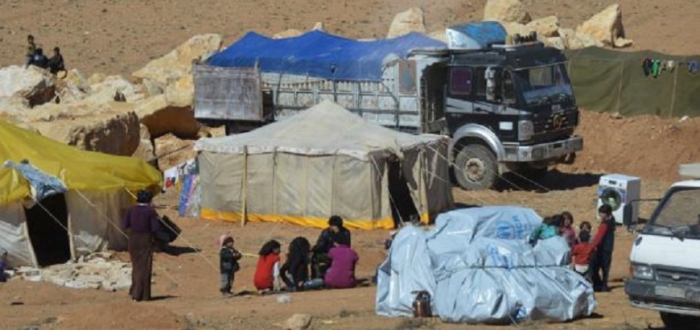The battle of the Assad regime, its Russian allies and Hezbollah in Palmyra, central Syria, was not just a battle against the extremist Islamic State organization, which seized the ancient city in May last year, but was in large part against the civilians themselves, who were forced to flee the city.
According to Al-Souria Net’s correspondent in Homs, Yaarib al-Dali, 70,000 people fled Palmyra during the recent battles which the regime started with the aim of taking control of the city.
Dali said that the city of Palmyra is now empty of residents, adding that some families had reached the cities of northern and eastern Aleppo and the villages of Idleb.
In Azaz in the Aleppo countryside and in Maarat al-Nouman in Idleb, people of these cities have received the families into their homes after they were forced to congregate in schools, hangars and mosques.
Our correspondent said the number of families who reached the north was between 1,500 and 2,000, adding that during their flight, people had trekked over land by foot out of fear their cars would be targeted by regime and Russian airplanes on the pretext that they were ISIS vehicles, indicating that the planes had targeted some non-militant cars and killed and wounded civilians.
Many of the displaced people also walked by foot to areas of the Idleb and Aleppo countrysides as they did not have money to pay for transportation. With the majority unable to rent cars to pursue their route, the civilians headed toward the south by foot and joined camps for displaced from Mahin and other villages of the eastern countryside near the Jordanian border.
In addition, a large number were also displaced toward Raqqa, from where ISIS did not allow them to leave. One of the city's residents told Al-Souria Net that a number of his brothers and relatives wanted to leave toward Azaz but ISIS did not allow them to do anything but move within the areas they controlled.
Al-Souria Net’s correspondent noted that Palmyra's people left their homes without taking anything and were in need of aid. He said: “Some of the residents were shepherds and camel herders and their displacement and abandonment of their possessions has exacerbated their troubles, especially after the looting by the regime soldiers, as well as the fact they cannot go out in their cars out of fear of bombardment.”
In another context, the joint Syrian-Russian raids and bombardment on Palmyra damaged the city’s antiquities far more than did the machinery of the criminal Islamic State group.
Quoting local activists, Al-Souria Net’s correspondent said that ISIS had destroyed statues it considered idolatrous, while Assad’s warplanes had destroyed historic buildings and columns indifferently during its indiscriminate bombardment of the city.
According to some of the soldiers who participated in the battle of Palmyra, the regime deliberately pushed its forces into the antiquities to attack the organization.
The soldiers said that the regime forces chose to begin the battles from the direction of the hotels and historic tombs although it was the weakest militarily, as if its aim was to encourage the destruction of the ancient city to win over global public opinion.
This article was translated and edited by The Syrian Observer. Responsibility for the information and views set out in this article lies entirely with the author.


